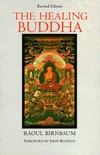 |
 |
 |
 |
"Bodies in Balance: The Art of Tibetan Medicine" is the first comprehensive, interdisciplinary exploration of the triangular relationship between the Tibetan art and science of healing (Sowa Rigpa), Buddhism, and the visual arts. This book is dedicated to the history, theory, and practice of Tibetan medicine, a unique and complex system of understanding body and mind, treating illness, and fostering health and well-being. Rooted in classical Indian medicine, Sowa Rigpa has been influenced by Chinese, Greco-Arab, and indigenous medical knowledge and practices and further developed within the context of Buddhism in Tibet. It adapted to new geographic, socio-cultural, and medical environments on the Tibetan Plateau, the Himalayas, and Mongolia and survives today as a living medical tradition whose principles are at the heart of many complementary therapies now widely used in the West.
Generously illustrated with more than two hundred images, "Bodies in Balance" includes essays on contemporary practice, pharmacology, astrology, history, foundational treatises, and the Medicine Buddha. The volume brings to life the theory and practice of this constantly evolving, ancient healing art, which is becoming increasingly sought after world-wide.
Theresia Hofer, an anthropologist, is the curator of the "Bodies in Balance: The Art of Tibetan Medicine" exhibition and author of "The Inheritance of Change: Transmission and Practice of Tibetan Medicine in Ngamring." Contributors include Pasang Yontan Arya, Sienna R. Craig, Gyurme Dorje, Yang Ga, Frances Garrett, Barbara Gerke, Janet Gyatso, Theresia Hofer, Knud Larsen, Katharina Sabernig, Martin Saxer, Geoffrey Samuel, Inger Vasstveit, and Ronit Yoeli-Tlalim.
|
|
 |
 |
 |
 |

|



